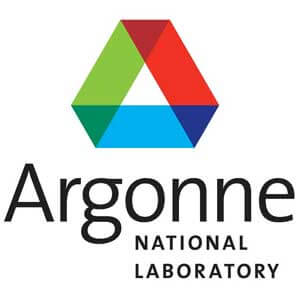Andreas Glatz, who recently joined the NIU Department of Physics through a joint appointment with Argonne National Laboratory, has won a $4 million grant over the next five years to develop and apply novel methods of optimizing superconductors for power distribution and other energy applications.
Glatz is leading a team that includes seven other scientists at Argonne, where the research will be conducted using advanced computing methods and the federal laboratory’s world-class computing capabilities, which include the Mira machine, the world’s third-fastest supercomputer.
The effort is being funded by the U.S. Department of Energy and supported by the SciDAC-3 (Scientific Discovery Through Advanced Computing) Application Partnerships in Materials and Chemical Sciences program.
“Our team will develop and implement large-scale computational algorithms and tools to predict how to design the best possible superconducting cable using available superconducting materials,” Glatz says.
The science and tech communities have long been very interested in superconductors. Below certain temperatures, they conduct electricity without energy-sapping resistance, which is especially beneficial for power distribution. Superconductors are also used in Magnetic Resonance Imaging (MRI) devices, in the transportation industry and in scientific-research equipment, including particle accelerators.
The large-scale computational work will be carried out mostly at the Argonne Leadership Computing Facility, with the final optimization to be done on the Mira. An engineering marvel, the 10-petaflops machine is capable of carrying out 10 quadrillion calculations per second.
“The algorithms we develop will also be useful in many other research areas,” Glatz says. “In particular, the algorithms for Graphics Processing Units will be adopted for several other projects on the NIU GPU computer cluster.”
 Glatz, who was hired as an associate professor this past spring, is also associated with NIU’s Institute for NanoScience, Engineering and Technology (InSET). He will teach a graduate-level statistical mechanics course next semester and is already involving students in his research.
Glatz, who was hired as an associate professor this past spring, is also associated with NIU’s Institute for NanoScience, Engineering and Technology (InSET). He will teach a graduate-level statistical mechanics course next semester and is already involving students in his research.
“At the moment I have one NIU Ph.D. student working together with a student from the computer science department on a closely related research project,” he said.
Lisa Freeman, vice president for Research and Graduate Studies, noted Glatz is one of three NIU faculty members hired recently as joint appointments between the university and Argonne.
The hires also include Mike Papka, Argonne’s deputy associate laboratory director for computing, environment and life sciences, who obtained a faculty appointment earlier this year in computer science; and David Murphy, an assistant professor within the Department of Geography and an associate of the Institute for the Study of the Environment, Sustainability, and Energy. Murphy was hired in 2011.
Freeman said the Department of Chemistry and Biochemistry also will be searching for a new faculty hire in collaboration with Argonne and InSET.
“These arrangements maximize the potential for synergistic collaboration between researchers at NIU and Argonne, and expand opportunities for NIU students to perform research at the federal laboratory under the joint direction of Argonne scientists and our faculty,” Freeman said. “In addition, these appointments allow NIU undergraduate and graduate students to interact with Argonne scientists and engineers in the classroom.”

